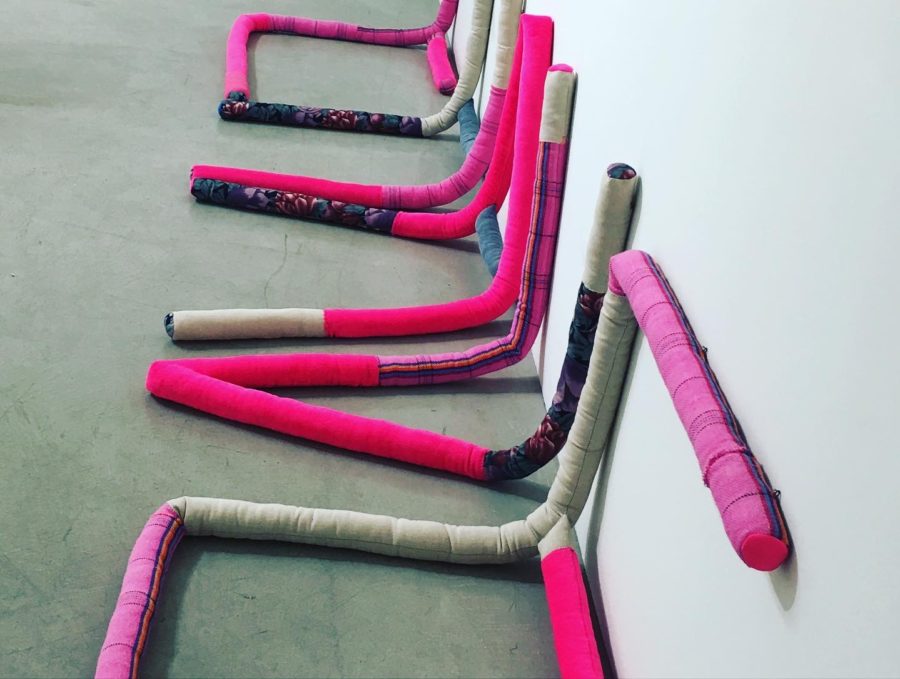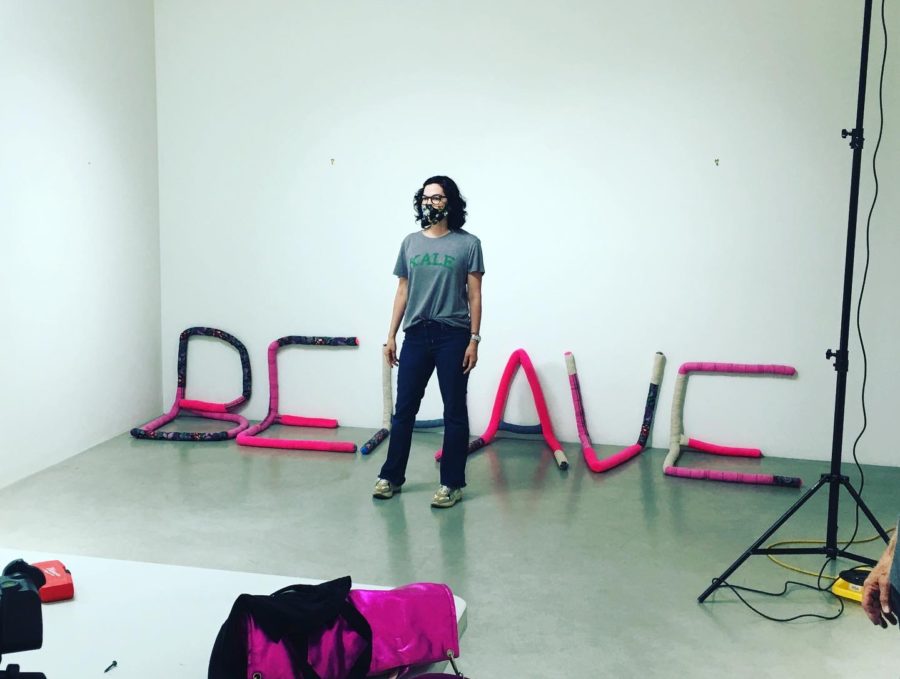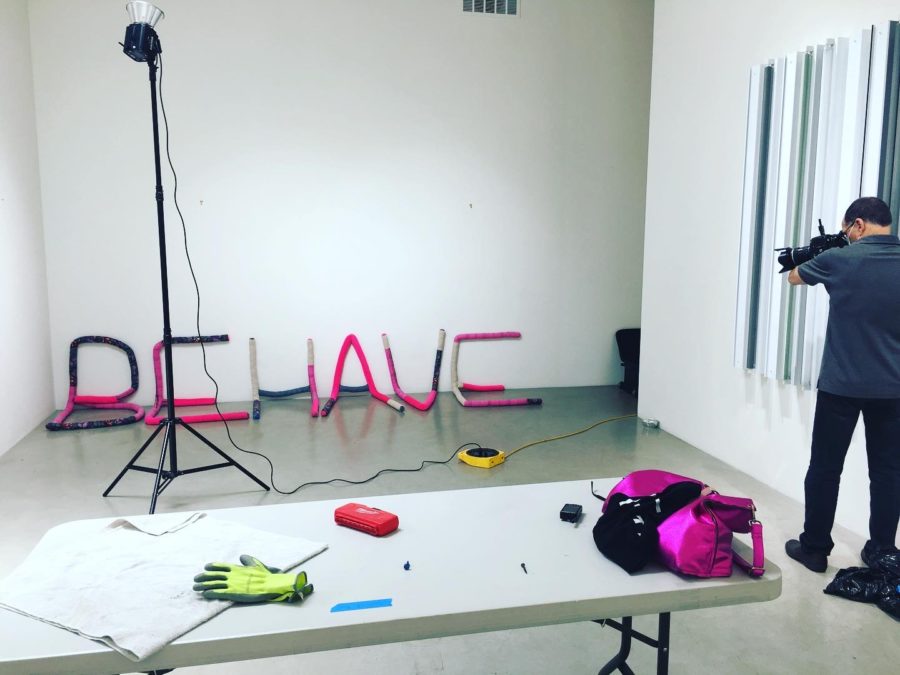BEHAVE
BEHAVE,
Soft sculpture , various textiles and stuffing.
2020
Mely Barragan
After leaving the Salk Institute, with my mind fully charged by my meeting with Dr. Kay, I began
looking at casual interactions with different eyes. My work has always been nourished by human
relationships, mostly focusing on specific cultural traits (identity and gender). But, to be loyal to
this project (Trifecta), I tried to look at the reactions one has in our everyday relationships and
behaviors in a much more objective manner. My usual creative process takes me into
assemblage and collage as a way of clarifying my ideas, but there was one word, specifically,
that I haven't been able to take out of my mind. This word, like other words that have haunted
me throughout my practice, needs to be left alone, written in capitals and splattered on a wall for
it to be observed.
Dr. Kay and I come from two different worlds, as it was evident in our meeting. We both had a
bit of trouble understanding each other just like the border area we live in; communication
sometimes struggles. Our different systems value different feelings, different outcomes, and
different ways of thought. But, there are universal actions and reactions and the word I have in
mind is almost the only attitude needed to create descent communication.
BEHAVE. Behavior is cultural, but it is also biological, and the two must coincide for that
behavior to create positive communication. As we all know when only one of these is willing to
cooperate and the other is not the result in behavior can be very negative and even life
changing. The opposite is also true––the outcome is totally different.
As shown in: TRIFECTA
Trifecta: Art, Science, Patron
September 25, 2021 – January 16, 2022
Featured artists include: Marcos Ramirez ERRE, the De La Torre Brothers, Siobhan Arnold, David Adey, Xuchi Naungayan Eggleton, Debby and Larry Kline, Mely Barragan, Christopher Puzio, Cesar and Lois Collective and Wendy Maruyama.
Curated by Chi Essary
Major funding for this project generously provided by the Ray Thomas Edwards Foundation with additional support from Weston Anson and ArtWorks San Diego. Institutional support provided by the City of San Diego Commission for Arts and Culture and by the Members of the La Jolla Historical Society. The Society is immensely grateful to the Salk Institute for Biological Studies for their support and participation in this project.





Discussion Closed